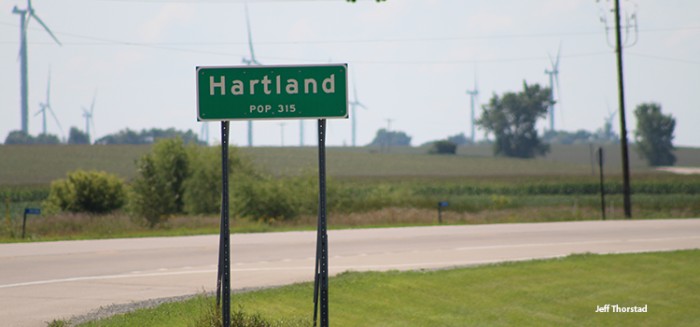Wind energy – a perfect partner for rural Minnesota
 | Kelley Welf, Communications Director |

 | Kelley Welf, Communications Director |
Most of us dread tax time. It’s a time of worry and frustration. Anguish over the paperwork. Anxiously awaiting that last computation that determines our fate. For thousands of Minnesotans, however, the Minnesota Department of Revenue has some good news for rural counties in Minnesota. More than $12 million will be on its way to 25 counties in the form of the Wind Energy Production Tax. Finally, a source of revenue that does not come from the pocketbooks of the citizens!
So, let’s take a deeper look at the Minnesota Wind Energy Production Tax and how it’s helping rural Minnesotans. Basically, this tax applies to each wind energy conversion system (WECS) (think wind turbine) that generates more than 2 megawatts of energy. The amount of the tax depends on the nameplate capacity or combined capacity of WECS that are under common ownership. For purposes of this tax, WECS meeting these criteria are combined if they are located within five miles of each other, and were constructed in the same calendar year.
The larger the project size, the higher the tax.
For large-scale wind energy conversion systems, (those over 12 megawatts of nameplate capacity) the tax is $1.20 per megawatt hour. Medium-scale WECS (over 2 – 12 megawatts) pay $0.36 per megawatt hour. Each county bills and collects the tax then distributes the revenue with 80 percent going to the county and 20 percent going to the cities or towns where the systems are located. Counties and towns are free to use that new source of revenue for whatever purpose they choose. Most counties use it to support schools, improve roads and bridges, invest in infrastructure or emergency services, and even hold down property tax levies for its citizens.
Once again, Mower County ranks first with more than $2.3 million in Wind Energy Production Tax revenue coming their way this year. Jackson County ranks a close second, with $2.2 million; and Murray, Nobles and Lincoln counties round out the million-dollar club with each county receiving more than $1 million this year.
Lincoln County, Minnesota, was the only county in the state to have completed a wind project in 2017. The Red Pine wind project is now the largest project in that county at 200 megawatts. The developer of this project estimates that because of the Minnesota Wind Energy Production Tax, the county can expect to receive approximately $1 million annually over the life of the project.
In addition, the development of wind projects includes significant economic development, which benefits the larger community. For example, according to the project website, the Red Pine project has invested more than $18 million into the local economy. This kind of economic development occurs when the developer purchases things like supplies, rents equipment or pays for utilities and fuel from local businesses. Once the project is complete, the economic boost continues as company vehicles require maintenance at local service stations, tools are purchased at local hardware stores, employees eat at the local restaurants and other local services such as ground maintenance and snow plowing are secured.
Wind Energy Production Taxes Help Small Communities
Subscribe to our newsletter for the latest on energy & our work
This year, more than one-quarter of the counties in Minnesota will receive payments from the Wind Energy Production Tax. Yet, these 25 counties make up less than 17 percent of the entire state’s population. The cost of maintaining aging roads, bridges, equipment, and other infrastructure investments is expensive and largely falls on local taxpayers. The smaller the community, the larger the tax bill may be. That’s why sometimes such projects just don’t get done. The Wind Energy Production Tax revenue offers an alternative to raising revenue for cash-strapped communities – and savvy larger communities, too. The development of wind projects and the resulting Wind Energy Production Tax payments can really offer these communities some meaningful financial relief. For example, Mower County invested $400,000 of its Wind Energy Production Tax revenue into their roads and bridges last year, and used the remaining $1.9 million to provide tax relief for their citizens. That goes a long way in a county with a population of less than 40,000.
For a small community with few opportunities to attract companies that can bring jobs, economic development and a new source of revenue, wind is a perfect partner.
Wind energy. It’s just smart for Minnesota.
Want to learn more about renewable energy? Sign up for our monthly "Renewable Champions" newsletter to get the latest stories and resources about the Midwest's transition to renewable energy.